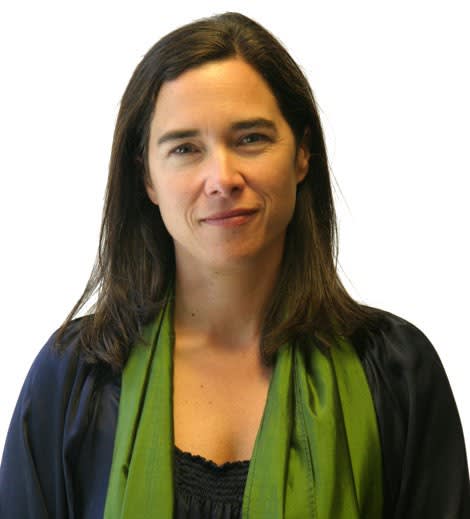Melbourne architect Shelley Penn named 73rd president of Australian Institute of Architects
Melbourne architect Shelley Penn has been elected the 73rd president of the Australian Institute of Architects.
She comes to the job having previously expressed a firm view on the differences between Sydney and Melbourne architectural clients.
"Melbourne clients with small budgets and nothing more than a kitchen extension would still want to do something very good and would interview five or six architects for the project ... In Sydney, architects I know have been contacted by people with $500,000 to spend who simply got their name from the phone book,” she said in 2002.
Work on a Richmond warehouse conversion in 2000 earned Penn a commendation in AIA architectural awards. The turn-of-the-century former vinegar factory retained its 1970s graffiti including a bold “shame Fraser again”.

She was the protégé of Melbourne architect Kai Chen for several years before traveling to Europe and Asia in the early 1990s.
Penn has lectured at the University of Melbourne, where she is particularly concerned with the poetic capacity of architecture to enrich the human condition.
She has worked as an adviser to government and private organisations on design matters, including a position as urban design consultant for Melbourne's EastLink project.
In 2000 to 2001 Penn worked as a design director in the office of the NSW Government Architect.
Penn is best more recently known for her review of the controversial Barangaroo development for the incoming O'Farrell government in NSW in 2011.
She is a sole-practising architect, a deputy chair of the Heritage Council of Victoria, acting chair of the National Capital Authority, the government planning organisation for Canberra, and a former associate Victorian government architect.
Penn is a mother of two and her partner, Mark Edgoose, is a silversmith and senior lecturer. She moved from Leichhardt in Sydney to South Williamstown six years ago, drawn by the open spaces and generous blocks close to the beach still only 20 minutes from the city.
"We love the west – the working-class guts of it, the industry that remains, the maritime influence and history of the port here," she told The Age in November 2011.
"Swings hang from trees in front gardens, people sit on their verandas and say 'G'day' as you walk past."
While she loves the area, she says Melbourne’s roads are not coping with the growth in West.
Penn rates her top five Melbourne suburbs as Burnley, Clifton Hill, St Kilda, Williamstown and Windsor.
She says the flat topographical landscape of Melbourne has led to the development of its cultural capital, much like Berlin.
"The flat topography, the network of transport and road access, relative affordability to get to and be 'among' culture, be it arts events, food culture, sport, and interesting, innovative and provocative architecture, that's all part of a city's cultural richness.”
Melbourne’s Etihad Stadium has been the subject of some criticism by Penn.
"The function is fine, but it is in the wrong spot. It blocks the city from Docklands. It's been one of the problems in the development of Docklands in terms of its use by people and its relationship to the CBD. I think Etihad is a bit of a barrier, literally,” she told The Sunday Age.
She says Monaco House is one her favourite Melbourne buildings, a consummate example of how architecture responds to the existing urban landscape. Other Melbourne landmarks she is fond of are Heide II, The National Gallery, Bolte Bridge, St Patrick's Cathedral and ACCA.
AIA chief executive David Parken welcomed Penn to the position at the annual general meeting yesterday.
"We are excited to have Shelley as the next advocate for not only the institute but our members and the broader architectural community."
The 72nd president was Brian Zulaikha, a founding partner of Tonkin Zulaikha Greer.